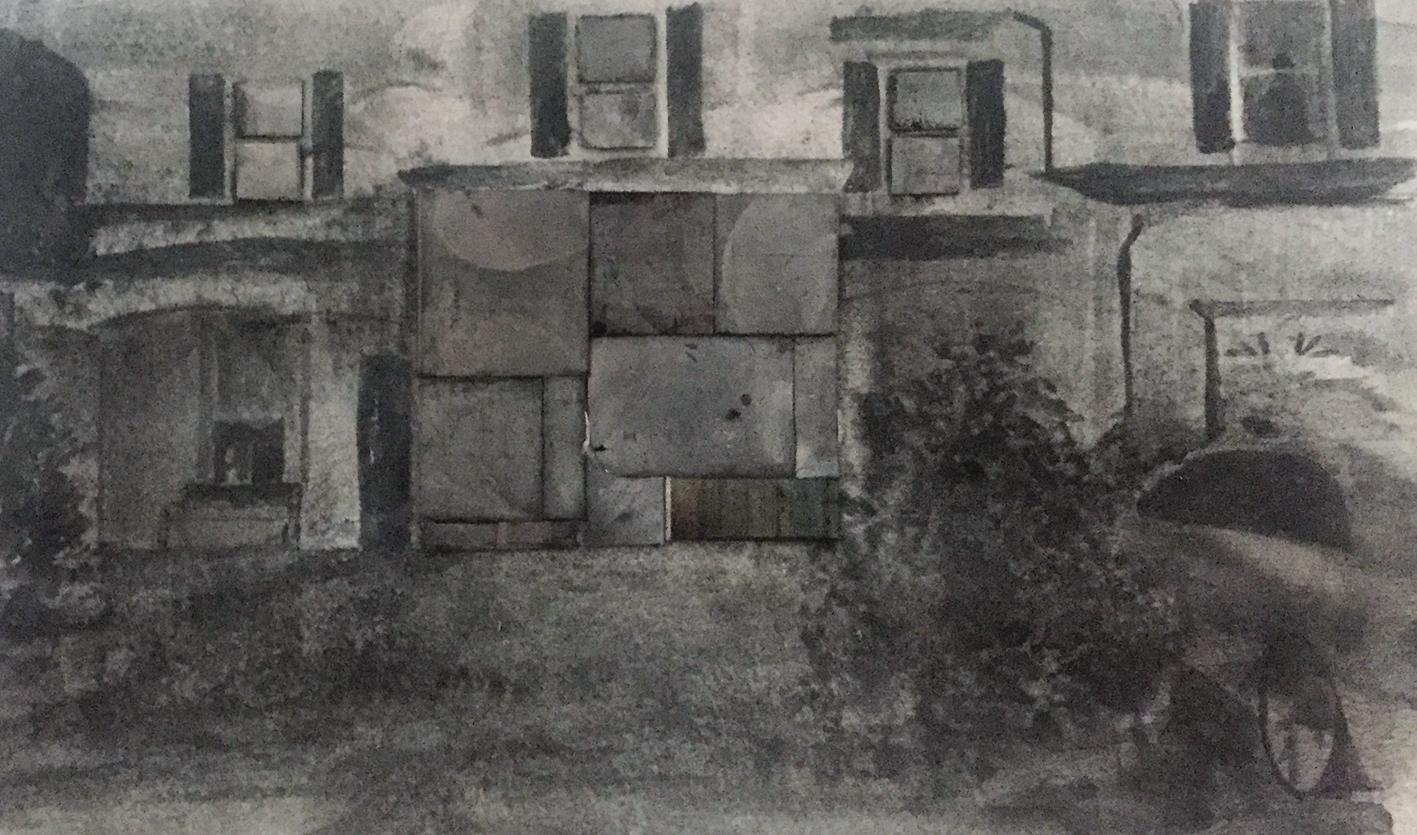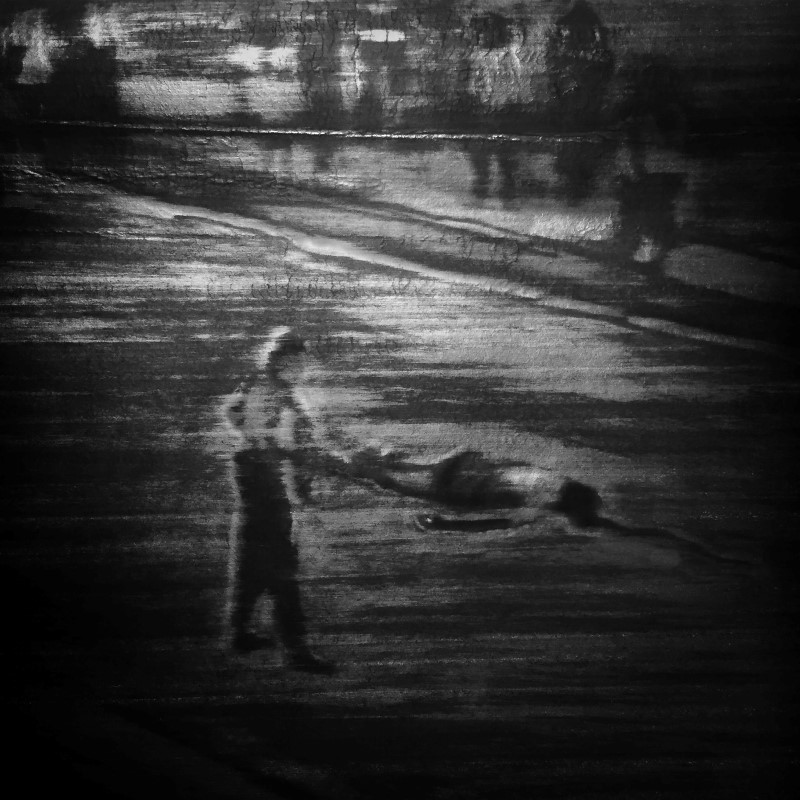Mike Brown @ Catherine Anyango
“One may say that the Negro in America does not really exist, except in the darkness of our minds.”
James Baldwin – Notes from a Native Son
By Michael Salu, ASX, February 2015
It is THAT dark. You know, the dark that exists under your fingernails that you idly pick at and flick away. It is THAT dark, the one you don’t notice as your coat is hung or your car is parked. It is THAT dark that comes with a glossy, coconut oil sheen within which you can see the reflection of your own guilt. Oh yes THAT dark, the shudder you don’t see as she continues stirring the pot of your wearied tryst. It is THAT dark, the barbed silhouette of a fence between you and them. It is THAT dark. The dark you’ve made pretty shimmering down the catwalk, but mute the din a little and listen closely and we can still hear those chains clanking with every slow manicured step. It is THAT dark. The dark that might be muttering to himself at the bus stop, ravaged and emaciated by the city’s indifference to invisible illnesses. Here the night vision goggles won’t really help, but you will be able to press ESC and back away to the main menu. THAT dark will remain, taking with it another who’ll stay shrivelling in the stagnant cold of THAT dark. He might even be your face of dark that you’ve hired to protect your evening’s entertainment and then you’ll even want to taste this dark a little when you so desire.
Catherine Anyango is acutely aware of this symbiosis and her haunting methodical scratchings are a ritualistic unearthing of THAT dark. Look at how her pencil scrapes away in earnest at the faded hopes of THAT dark. Rubbing away the technicolor delusion of our collective hard-on for everyone else’s story, she leaves bare the subjects of her drawings calling us to their honest absence. The starting point here is often the freeze frame, the news still of the crime scene. A redaction of a reduction. Those black and burnt beds draw us in to the spectral horrors of domestic banality, the flat-pack construct of an arid permanence out living our own doubts and fears (well maybe not if you shop in IKEA).

Trayvon M house (fingerprint powder) @ Catherine Anyango
Catherine Anyango is acutely aware of this symbiosis and her haunting methodical scratchings are a ritualistic unearthing of THAT dark. Look at how her pencil scrapes away in earnest at the faded hopes of THAT dark. Rubbing away the technicolor delusion of our collective hard-on for everyone else’s story, she leaves bare the subjects of her drawings calling us to their honest absence.
Anyango does a fantastic job of skewering our inexhaustibly perverse curiosity. Our arm-chaired outrage; the whirlpools of inertia that we create as we pointlessly spit flecks of digital propaganda at the already converted. Through these beautiful reconstructions of crime scenes there are many more questions than answers, quietly cajoling us to re-address our perversity for THAT dark. The one that pervades our timelines, near but far enough for us to flit on to the next hit without actually leaving those flat-packed armchairs, removed from the need for conclusion. Case in point, see Trayvon Martin/Mike Brown/Eric Garner (DELETE as appropriate).
James Baldwin’s essay “Many Thousands Gone” from the collection “Notes From a Native Son”, finds him musing on the black psyche and the replacement of a self with a ‘shadow’ and the psychological damage to the black male left by the searing shapes of our modern global history. Baldwin queries our inability to identify with the black male without the constructed spectacle of his own failure, be that through song, narratives, or the sociological signifiers of him, said black male as a pitiable fable. Look how cool (INSERT NAME OF DEFIANT, GOLD-ADORNED RAPPER HERE) is as he staggers anaesthetised and red-eyed onto the red carpet glare, mouth gleaming. That spectacle, faint, fleeting and holographic is filtered for your pleasure. Anyango’s depiction of Trayvon Martin’s very last moment is the shadowy trace, or the cookie and the cache that you’ll ignore as you close THAT window, but it will stay there, clogging up your space, slowing you down.
Michael Salu is a creative director, art and photography editor, designer, brand strategist, writer and illustrator
(All rights reserved. Text @ Michael Salu. Images @ Catherine Anyango.)






